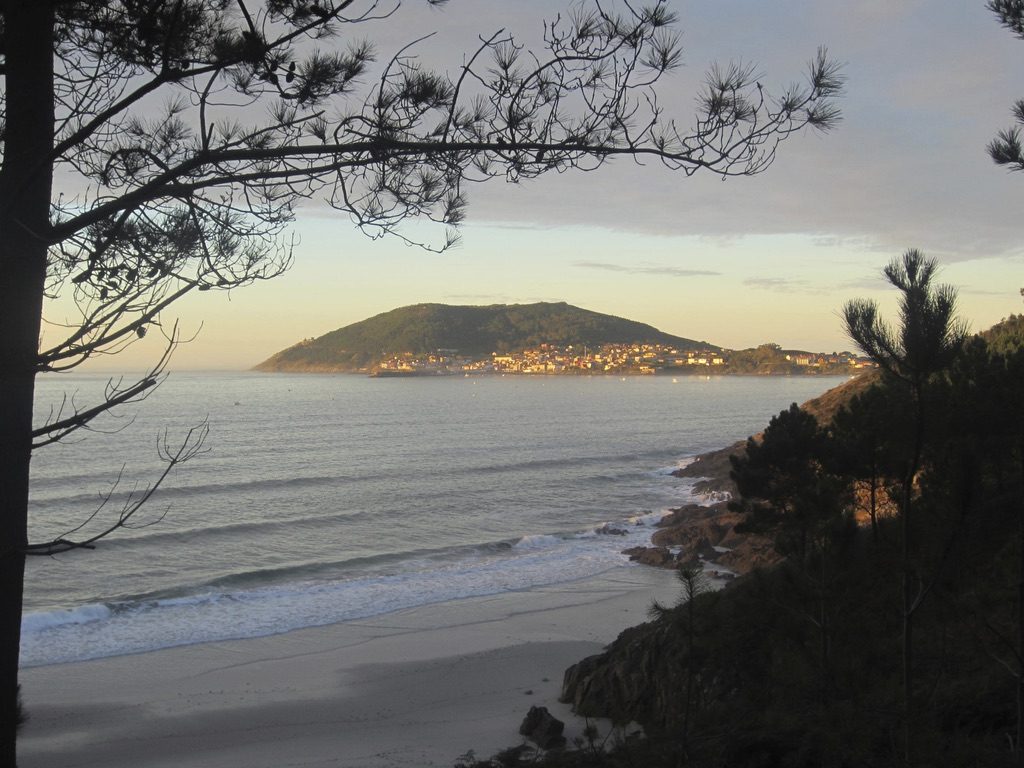
Not all caminos end in Santiago de Compostela. Reaching the grand cathedral, which houses the tomb of the apostle St James, is for many pilgrims the ultimate conclusion to their long journey. But for others, the road has a little bit more to run before the odyssey is over. Another older camino begins at the same cathedral. Following the Milky Way overhead, pagan pilgrims travelled these roads to the what was thought in Roman times to be the most westerly point on Earth. Here, the setting sun could be witnessed disappearing beneath the Atlantic Ocean. The Romans named this place Finisterre – the End of the World.
Finisterre lies along the northwestern coast of Spain overlooking the wild Atlantic Ocean. Many ships have met their grave in these forbidding stretches of water, leading to this shoreline acquiring the name Costa da Morte – the coast of death. The road to the end of the world is green and lush, rich in vegetation and abundant in growth. The torrential downpours that regularly visit this region are the reasons why. Though just a short journey, ranging from three days to a week depending on which route you take, this path can provide some of the most revelatory experiences of any camino. It can feel like the road to hell or the road to redemption, depending on your mood and equally depending on the weather.
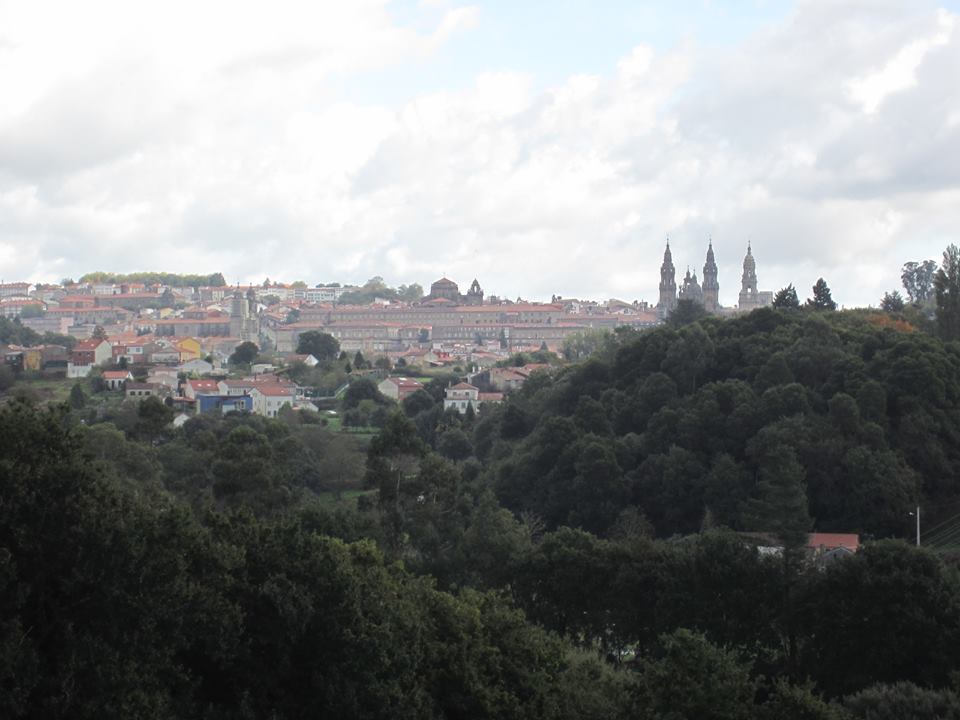
MEET CUTE
I’ve had the opportunity of walking to Finisterre five times, and walking back from there to Santiago on three of those occasions. For me, walking the camino without going to Finisterre is like reading a book but skipping the last chapter. I was once asked how do I manage the transition to normal life after finishing the camino. I thought about it and couldn’t come up with any satisfactory answer. Usually I just packed my bags, headed for the airport and hopped on a plane. Once home, life returned to a new normal fairly quickly. But then I thought about it a little more and I realised that doing the Camino Finisterre was my way of transitioning back to normal life. The road to Finisterre was the road home.
I first walked that path in October 2004, after spending a long weekend in Santiago to celebrate the completion of my first Camino Francés. Though the Francés had turned out to be everything I expected it to be, I didn’t particularly enjoy the additional journey I made to the world’s end. The weather was inclement, the roads turned out to be much longer than my guide book indicated, and I found the stages, especially the second day, to be dull and dreary. Getting to Finisterre and dipping my toes in the ocean was a satisfactory achievement, but when I ventured up to the lighthouse – the site of the ancient solar temple – the entire cape was shrouded in fog and I wasn’t able to witness to spectacle of the sun setting on the Atlantic horizon. I found myself getting increasingly tired on that journey, and by the time I reached the end I was just as happy to hang up my boots and head home. I had done enough walking for one camino.
No one ever steps into the same river twice, as the philosopher Heraclitus said, because it is not the same river and you are not the same person. The same is true of the Camino Finisterre. Following another life changing journey along the Camino Francés in 2013, I once again decided to follow the path to the ends of the earth. This time I planned to continue on the Muxia, and then walk back to Santiago. In total, the journey was about 200 KM, and should take a week to complete. Though my memories of it were none too positive, like a meet cute in a classic Hollywood movie, what starts out as annoying and antagonistic encounter between an ill matched couple usually blossoms into romance of hearts, flowers and fireworks. But my unfavourable first impression was only the set up for the first act of my camino saga. On my second outing my ambivalent attitude towards this micro camino developed into feelings of hostility and seething frustration, bordering on outright hatred. Yes, love was truly in the air.
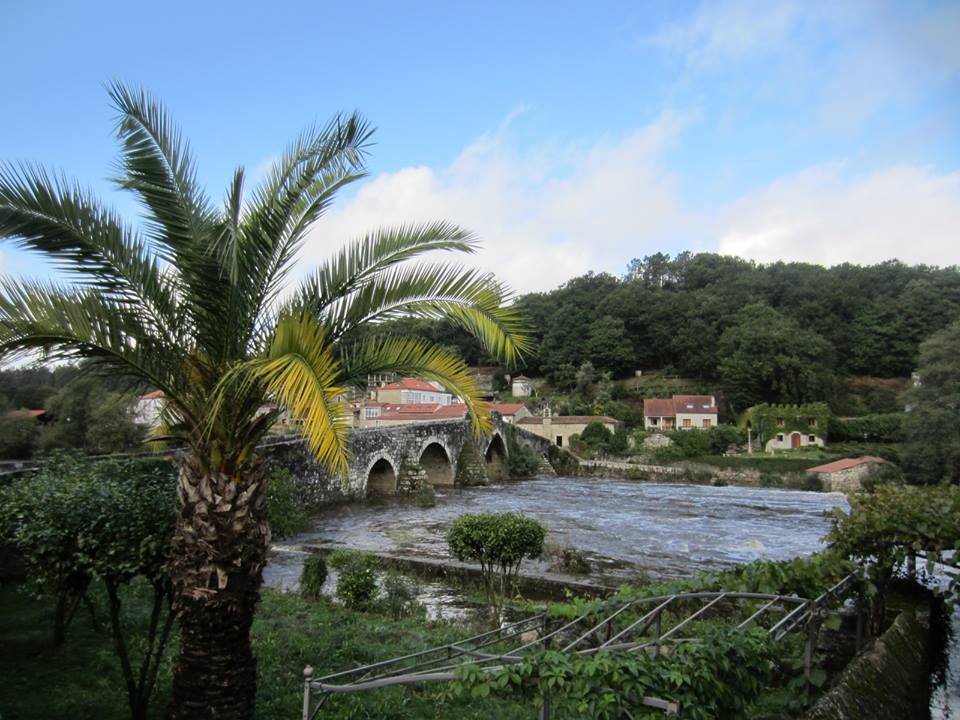
DEAD FROG
As I headed out from Santiago on the first day of my second Camino Finisterre, leaving behind the majestic Praza de Obradoiro and exiting the city through its narrow streets, I caught vague snatches of places that triggered memories from my first voyage along that path. Just beyond the city limits lay a lush eucalyptus forest, whose scents were enhanced by the misty morning air. The threat of menacing rain hovered overhead, and it lashed harshly, and sometimes retreated mercifully, as I passed along the quiet road with its scattering of houses and small sleepy villages. I walked large portions of the first stage to Negreira with some companions I’d met way back in Navarra many weeks before. While we passed a few other travellers along the path the sense of solitude on this camino was far more noticeable than on the Francés, which with its thousands of pilgrims and abundance of resources is now starting to look more like the Las Vegas strip than a traditional pilgrimage.
A few demanding ascents and descents through rich forested terrain brought us to the immaculate medieval Ponte Maceira. From here it is just a short walk to the small town of Negreira, the normal first stopping point and the only place where you can adequately replenish supplies for the next two days. In 2004 my guide book said that Negreira is 22 KM from Santiago, a walk I would have expected to complete in around four hours or less. It took me closer to six the first time, leading me to conclude that either the guide book was wrong or I’d gotten seriously lost. Second time out I completed it in a time that indicated that 22 KM was in fact the correct distance. I was inclined to think I must have gone seriously off course the first time, but all I could recall from that day was heavy rain, persistent tiredness, and the presence of a dead frog along the road.
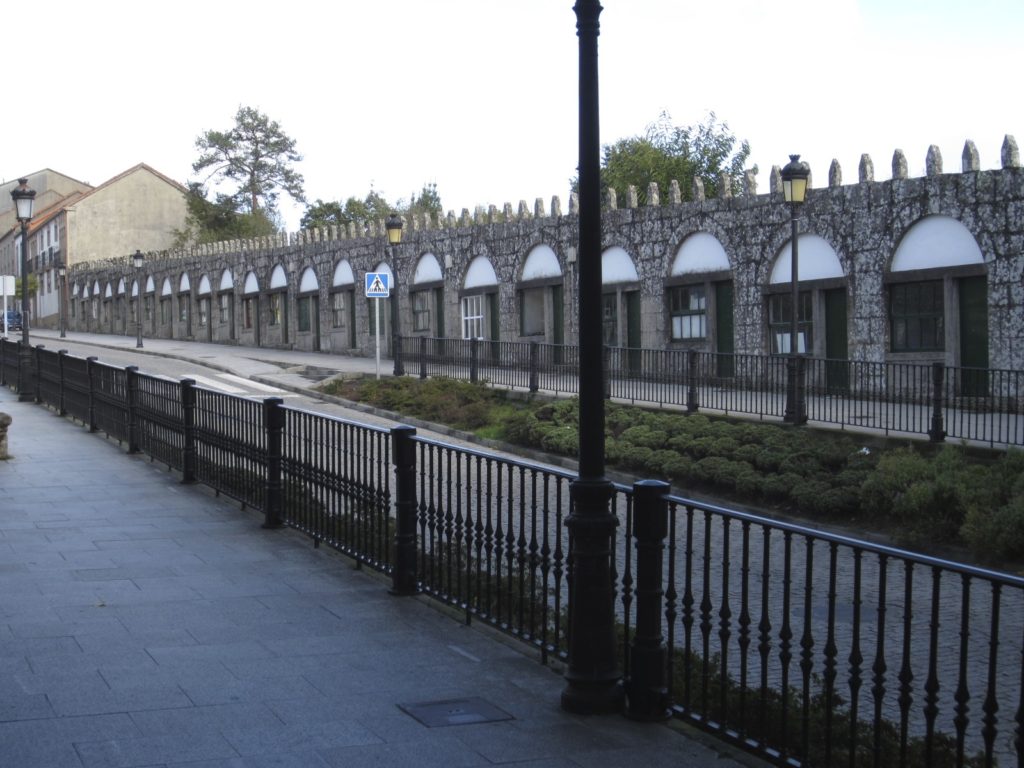
LOST IN THE DESERT
The camino calls people from all across the world, from a range of different faiths and none, to leave behind the comforts of everyday life and test and challenge their bodies and minds on a long and often demanding physical trek. But the camino is much more than just a long walk. Many who set foot on this path are at sea in life. They may be dealing with grief or loss. Some event or milestone in their lives may have triggered a crisis in their world, and their beliefs may have come crumbling down as a result. Despair and depression can often be a pilgrim’s travelling companions. The camino becomes the metaphorical desert into which a wandering soul has been exiled. Parts of the camino, such as the Meseta of Castile, do resemble the dusty dry landscapes of a desert, while the rainswept fields and forests of Galicia are about as far from arid country as it’s possible to get, but the climactic nature of region is not what matters. The desert represents a state of mind. It is an unforgiving place of isolation where the pilgrim will have to reappraise and reevaluate their lives before they can return to the normal world.
The Spartan conditions of the camino, where you share basic living spaces devoid of luxuries with complete strangers, force people to move well outside their comfort zones and confront and explore their own capacity for tolerance, patience, and simplicity. The demands on the body from walking long distances each day, and doing this repeatedly for over a month while carrying all you belongings with you can hardly be overstated, but it is the demands on the soul where the camino provides its greatest test of character. In its most challenging moments the camino can lead you into a spiritual underworld. Long periods spent in your own company, where you are under physical strain, force you to come face to face with your demons. Everyone will descend into their own personal hell at some point along the way. It is at these moments they’ll have to dig deep into their wells of energy, grit and determination to survive.
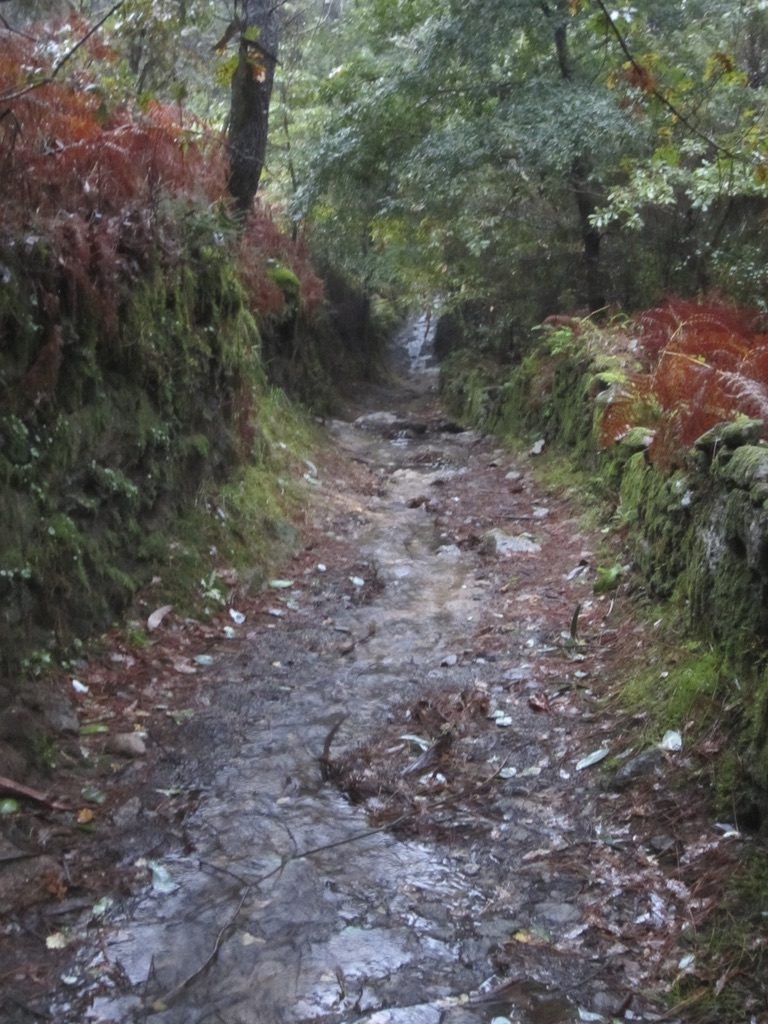
THE ROAD TO HELL
I had walked my second camino with a heavy heart. The realisation that I was soon to turn forty and become officially middle aged, and that I’d allowed certain life chances to slip through my fingers that may never return, had crashed down upon me, sending me into a spiral of angst and despair. By my own reckoning I had been cast out into a psychological wilderness, and the camino was the only place I could seek refuge. The physical journey was the easy part for me, especially as I had done it before, but the dark night of the soul cast its long shadow over my voyage. I had made great friends and acquaintances on the Francés, whose support and encouragement had given me the strength to keep on going when I felt like all hope was lost, but eventually I would have to find that strength in myself if I was to find my way out of the desert. My day of reckoning came on the stage between Negreira and Olveiroa. This was my road to hell.
Negreira is the only town of note on the first 70 KM of the Camino Finisterre. Beyond that you’re into the wild reaches of pastoral Galicia. First time around this region seemed like a place where you’d end up if you got bored with the middle of nowhere and needed somewhere less stimulating to chill out. On leaving Negreira you pass through a deep and inviting woods which I first navigated in the dark, stumbling my way over gnarled roots and and banging my burgeoning ingrown toenail against every rock as I awaited the dawn. From there, until I reached Olveiroa, a pretty little stone village where it looked like nothing much had changed since the days of the original pagan pilgrims, I walked through a vast and empty countryside where the bollards marking the distance to my final destination seemed to increase the further I walked. It was the 12th of October, Columbus Day, yet another holiday where nothing opens in Spain, but in this isolated region, where human life was hard to find, there were few places of business to begin. The road was long and lonely, the scenery bland, the weather heavy and murky, and my energy levels were low.
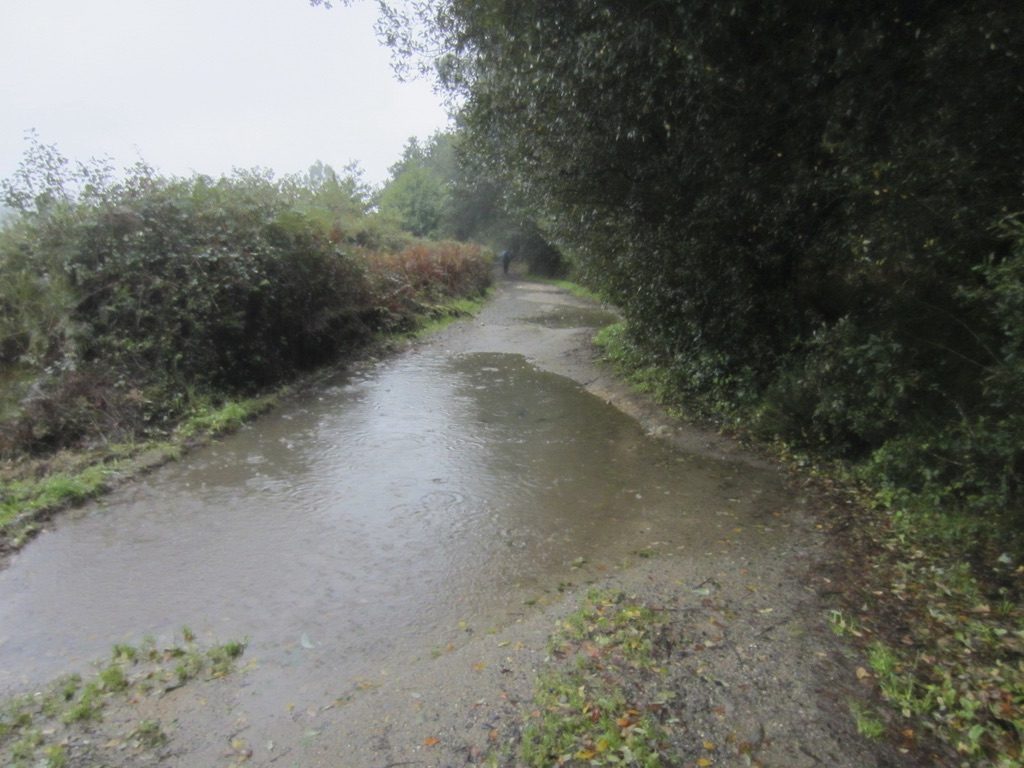
My second walk from Negreira to Olveiroa began on a grim and forbidding October day, not a holiday like the first time I passed along that road, but in these parts of Spain, where there’s a very casual attitude to business hours, the effects were much the same. Two of my travelling companions looked at the weather as they ate breakfast in the albergue and decided they would finish their journey there in Negreira and take the bus the rest of the way. We planned to meet up in Finisterre the following night. Others decided they would proceed with caution. I lived by the mantra that whatever the weather I would walk, so I put on my waterproof gear and headed out into the rain drenched streets to walk along what I recalled as the most foot draggingly forgettable day of my first camino.
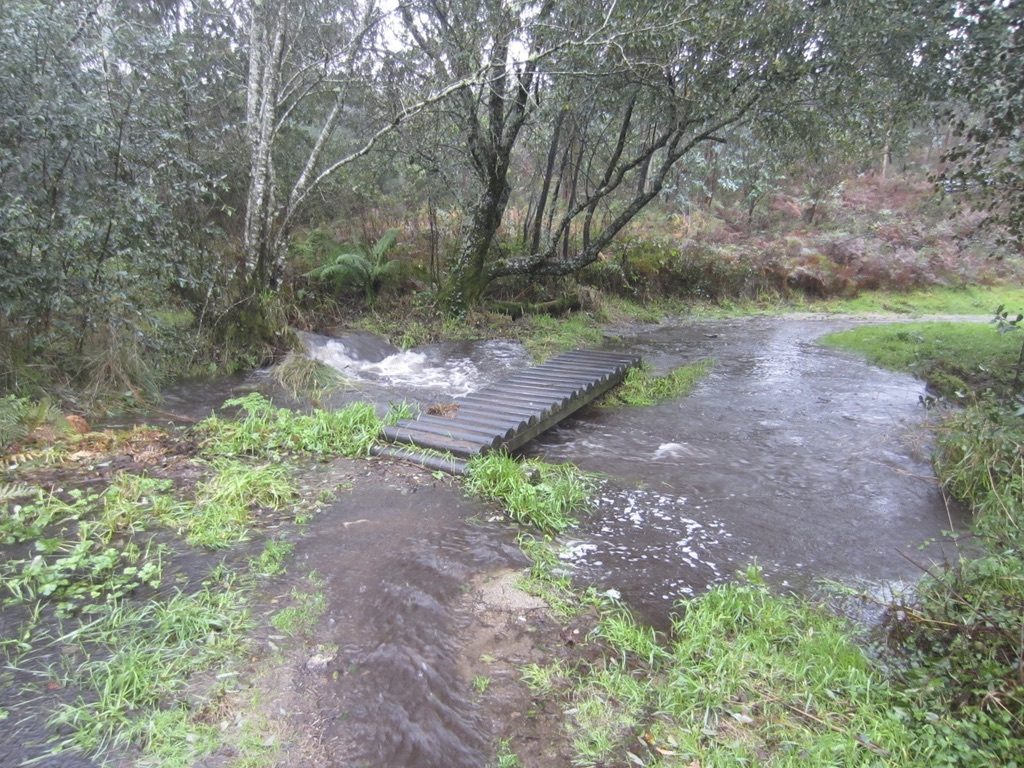
Rain comes in many shapes and sizes. As an Irishman, I am well used to precipitation. In a country where it rains 400 days a year we have experienced as many different types of rainfall as the heavens can provide, and we have an equally extensive vocabulary of terms to describe the different forms of deluges. However, one term we never use, though English language students usually learn it, is the phrase raining cats and dogs. Family pets cascading from the sky is an unusual analogy to describe the weather, but along the path from Negreira to Olveiroa on that fateful October day in 2013 I started to appreciate the comparison of angry mutts and quarrelsome cats cascading down from above. I also recognised it didn’t go quite far enough, so I was obliged to invent a whole new language to describe the apocalyptic beating the heavens bestowed on me. Raining cattle and elephants, with the occasional dinosaur thrown in for good measure, would not be too far off the mark.
After little more than ten minutes on the road, I would have been happy to take shelter in the nearest albergue so intense was the soaking I’d received. But I still had 32 KM to go that day. The rain was falling hard and consistently, making a mockery of my waterproof jacket and rucksack, though my Goretex boots held out in those initial stages. The further I walked the heavier the rain became. It started to fall horizontally, blasting into my face with the intensity of an angry woke mob, rising perilously close to the top of bridges I had to cross, and eventually turning roads into rivers, leaving me with no choice but to wade through. Sturdy as my Goretex boots had been, they could offer no protection when the water poured in over the top. And so I had to march on with water laden boots, in water laden clothes, carrying a water laden rucksack along water laden roads. And march on I did, in spite of delirium that descended upon me with the same ferocity as the downpour. There was no turning back, no where to shelter, no where to stop for a break. There was no alternative but to walk on.
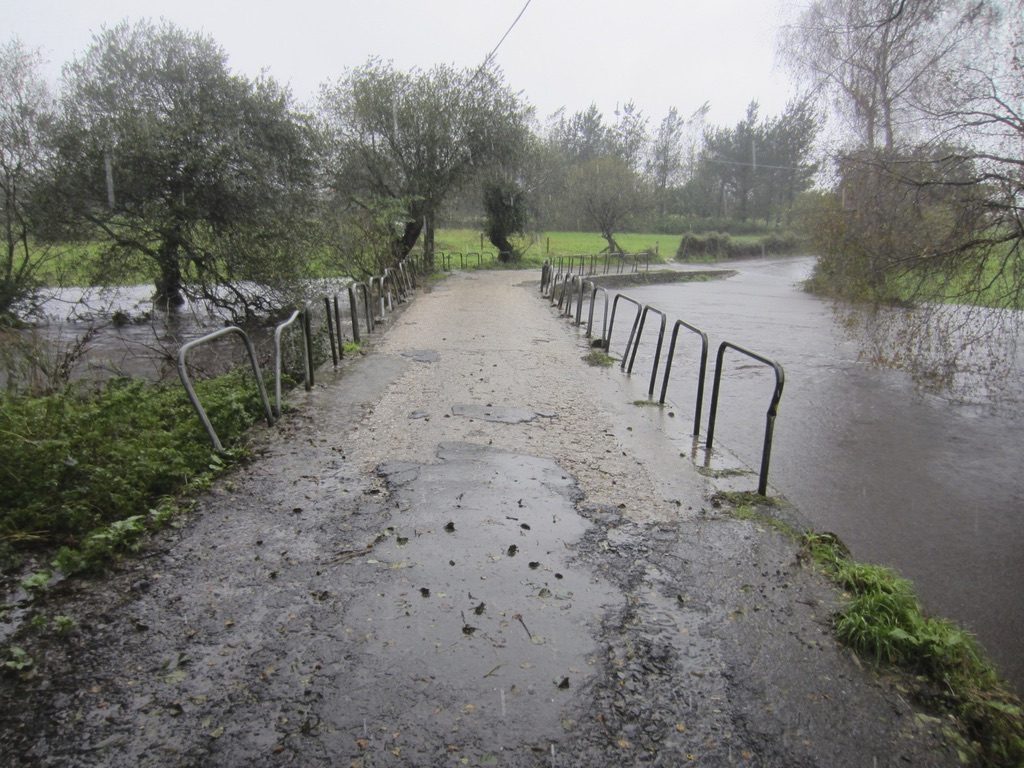
LIFE WISH
These same roads were the most forgettable ones I’d travelled in 2004, but there is nothing like a biblical soaking to turn that stage into the most unforgettable one I’d ever walked. Every tree, bend, bridge and house was now burnt – or rather soaked – into my memory. I would never consider that path to be a long and lifeless stage again. This day’s walk was a truly horrible experience, but at the same time I never felt more alive. Only when we move – or are thrown – out of our comfort zones do we truly come face to face with the endless possibilities of our character. This can be a terrifying, torturous, and totally unpleasant process, but it’s at these moments we can make real progress.
Along that rainy road to hell I discovered how the most unbearable weather conditions can force you to in the present moment just as effectively as any form of meditation or spiritual training. Your mind chatter and internal monologue, which can often be a very negative life-limiting story, can easily be silenced when your survival is at stake, or when you’re so engaged with what you’re doing you don’t have time to think about the past or the future. I now understood why some people felt the need to jump out of planes, or scale the highest mountains or engage in other death defying stunts. They did these things not because they had a death wish, but because they had a life wish. It was how they shut down their over thinking minds and become as present as a Buddhist monk.
I also discovered what I had to do to deal with all the noise in my head: go for a very long walk in the rain. The thought of turning forty and all the other self indulgent psychological baggage I’d been carrying on the camino meant very little as I plodded through the rain swept countryside of Galicia, with the squelching of my saturated boots providing the only soundtrack. The hunger gnawing at my stomach and the apocalyptic torrents being hurled at me by angry Gods above cast my mid life crisis far down on my list of priorities. As the day wore on I stopped caring about all the other stuff in my head and focused on getting through that immediate nightmare. For the first time I realised I wanted to escape the Hell in which I found myself (or had created), and now I had found the resources to do so.
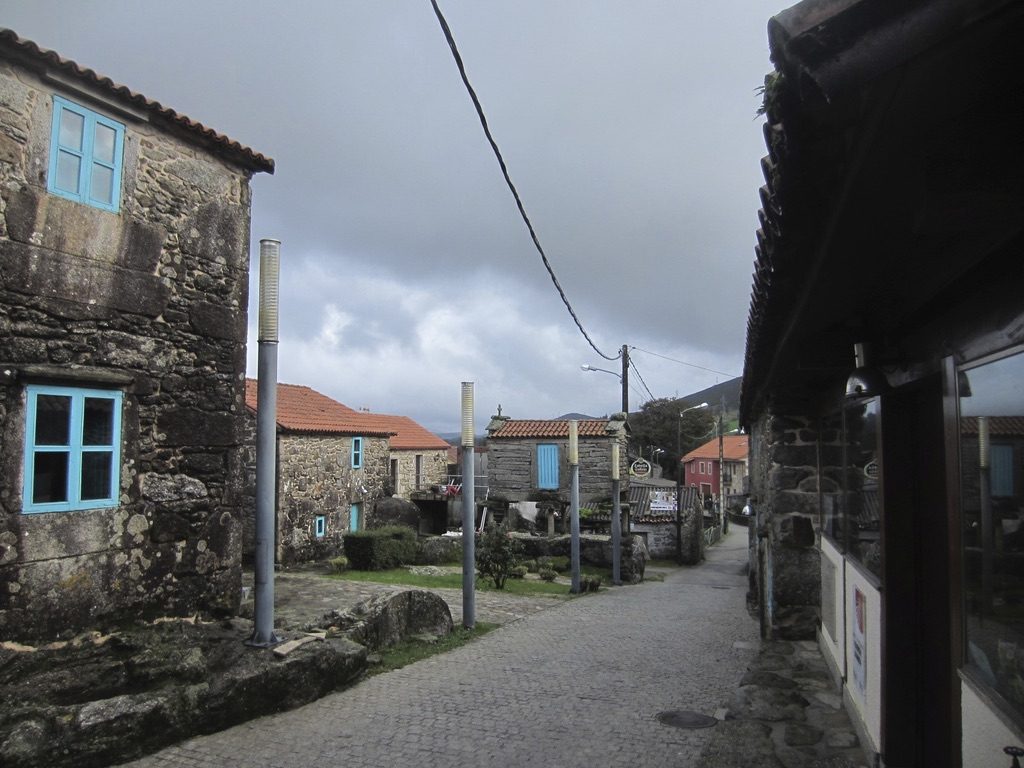
Reaching Olveiroa after the longest six hours I’d spend on the camino provided the same level of relief as a mortuary slab would for the victim of a badly botched execution, but a hot shower and a hearty dinner was enough to shift the horrors of the day firmly into the memory banks. There were many lessons learned that day: I discovered that it was not the road that was dull. It was my perception of it. How we see the world is not a reflection of how it is but how we are. That day also taught me that I could find the strength, stamina and resilience to carry on when there was no opportunity to run and seek cover. That stretch of road would remain permanently etched in my memory as a reminder of what I had endured, but also what I could overcome. The time was fast approaching when I would move out of the desert and rejoin the land of the living. But I wasn’t quite there yet. The next day I would have to overcome all over again. Whoever said getting to the end of the world would be easy.
To be continued…